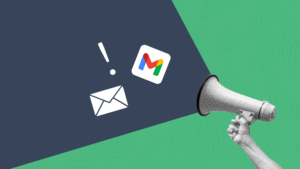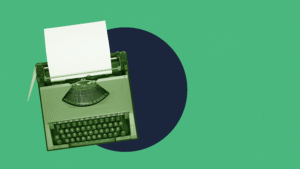What does it take to create a successful email newsletter? We’re glad you asked! One of the easiest ways for organizations to jump into email marketing is to create a weekly or monthly email newsletter, but not all newsletters are created equal. Creating a successful newsletter that has a good open and retention rate takes some thought, planning, and know-how.
We talked to some of our staff and looked at several popular newsletters both in our industry and outside of it to see what commonalities we could identify. It was great to see our how own personal experiences and our professional knowledge aligned! We narrowed the list down to five main qualities that will help you have a more successful newsletter.
Define the Purpose of Your Email Newsletter
We talk about this in every aspect of marketing and it’s especially important for email newsletters. Before you ever make a single email, you have to sit down and make a plan! The big question to answer is, “what is the purpose?” Knowing the purpose behind your email will help you to choose content, figure out what it should look like, and keep you on track!
For example, at Dogwood, our newsletter exists primarily to keep our readers up to date with what’s happening at the company and to share resources with them that they might have missed. Because of that, we don’t do a whole lot of “sales” through our newsletter. Of course, we want people to know what we offer, but our newsletter is very rarely “salesy.” We are a very relationally focused business, so the newsletter is just one way that we like to build those relationships and stay connected with our clients and potential customers.
It’s up to you to decide what the purpose of your newsletter is, but once you do, it will help immensely. When you begin thinking about what to put in that week’s or month’s newsletter you can always come back to your purpose and goals to make sure that content is in alignment.
Provide Value
In marketing, we have what we call the 80/20 rule which states that 80% of your content should provide value to your audience and only 20% should ask something of them. I’m sure if you think about the organizations that you enjoy following and interacting with you’ll find this to be true of them. So, when thinking about what to put in your newsletter, you need to think about what kind of resources or content items would add value to your audience’s experience.
This can be a wide range of things. It could be blogs that you’ve written that share tips, reviews, or suggestions relevant to your niche or industry. You might link out to a video, podcast, or article that you enjoyed recently and explain why it’s relevant to your audience. Perhaps you share a discount code that only your subscribers have access to. The ideas are limitless!
Notice that I didn’t list event promotion or sales promotion as one of the things that “add value.” We know that what you offer to your audience is valuable, however, asking someone to make a purchase or register for an event are asks even though the product or event might be something that adds value. This doesn’t mean you can’t do these things within a newsletter. It just means you need to be mindful and recognize them as an ask and not a give.
Keep it Short
One of the things that a lot of people get wrong when starting an email newsletter, especially if they’re transitioning away from a physical newsletter, is that they try to make a 1 for 1 swap. By doing this, not only are you not creating content that is appropriate for the medium, but chances are you’re creating emails that are too long! As a general rule, your emails should be 20 lines of text – or about 200 words – or less for optimal response rate.
Now before you start freaking out, this is just a rule of thumb. It is not a hard and fast rule and honestly depends a lot on who your audience is. For example, one of the newsletters I receive weekly comes from Modern Mrs. Darcy, a bookish online community, and since their audience is made up of avid readers, the vast majority of their emails are text. However, even they typically follow the 20 lines of text rule.
The truth of the matter is this, the average office worker receives around 121 emails every day and the average email open rate is around 21%. You have to do everything you can to make your email a positive experience so that when they see your name pop into their inbox it’s exciting and not annoying. One surefire way to make sure no one reads your email is to make it too long.
You might be wondering if I can only write 20 lines of text, how do I say anything at all? Great question, I’m glad you asked!
Link Out to Resources
While emails are great resources in and of themselves, they serve a greater purpose when they are pointing people back to your website. In general, if someone is subscribed to your newsletter, chances are they are interested in whatever service, product, or community you’re representing. However, even within those communities, there are going to be things people are interested in and things they aren’t. This is why linking out to other resources instead of writing them into your email is such a great option!
By giving a short snippet about the resource and then providing a link out to another website (or your own) you’re providing value, keeping your email short, and allowing your individual audience members to choose for themselves what they want to invest additional time in. When you have a 5 paragraph explanation in your email if someone isn’t interested they’ll move on meaning that they’ll never make it to the rest of the valuable information in your newsletter.
Be Consistent
Last but certainly not least, be consistent! Consistency is key in all areas of marketing, but especially in email marketing. As mentioned earlier, one of the goals of a successful email campaign is to remove any barriers keeping people from reading and interacting with your content. A really easy way to remove barriers is to create consistency so your audience knows what to expect.
Consistency in email newsletters doesn’t just mean when you send them. Although that is important. It also has to do with what you put into the email and what layout you have. This doesn’t have to be super rigid, but it helps build trust among your readers when they know what kind of content they can expect with each email.
A great example of this is the Communication Arts Daily email. This email always follows the same basic structure. There is one promotional banner at the top of the email followed by the newsletter logo. Next, there will be 1 to 3 articles with a featured image, a short description, and a read more button followed by a “What We’re Reading” section with titles that link out to 3 more articles not written by the company. Lastly, there’s an advertisement banner at the bottom.
This is the format more or less every single time. No surprises. This kind of consistency helps create the kind of trust that keeps readers subscribed.
If you have an email newsletter and you’re thinking that it doesn’t follow any of these rules, don’t worry! It’s not too late to make changes. Don’t give up and don’t overwhelm yourself. Pick one thing at a time and begin to improve upon it. But, if you get going and it feels like way too much to handle, no problem. Dogwood is here to help with exactly this! We’d love to help you strategize or even run your newsletter for you. There’s always a way we can partner together to make your marketing strategy more successful!


